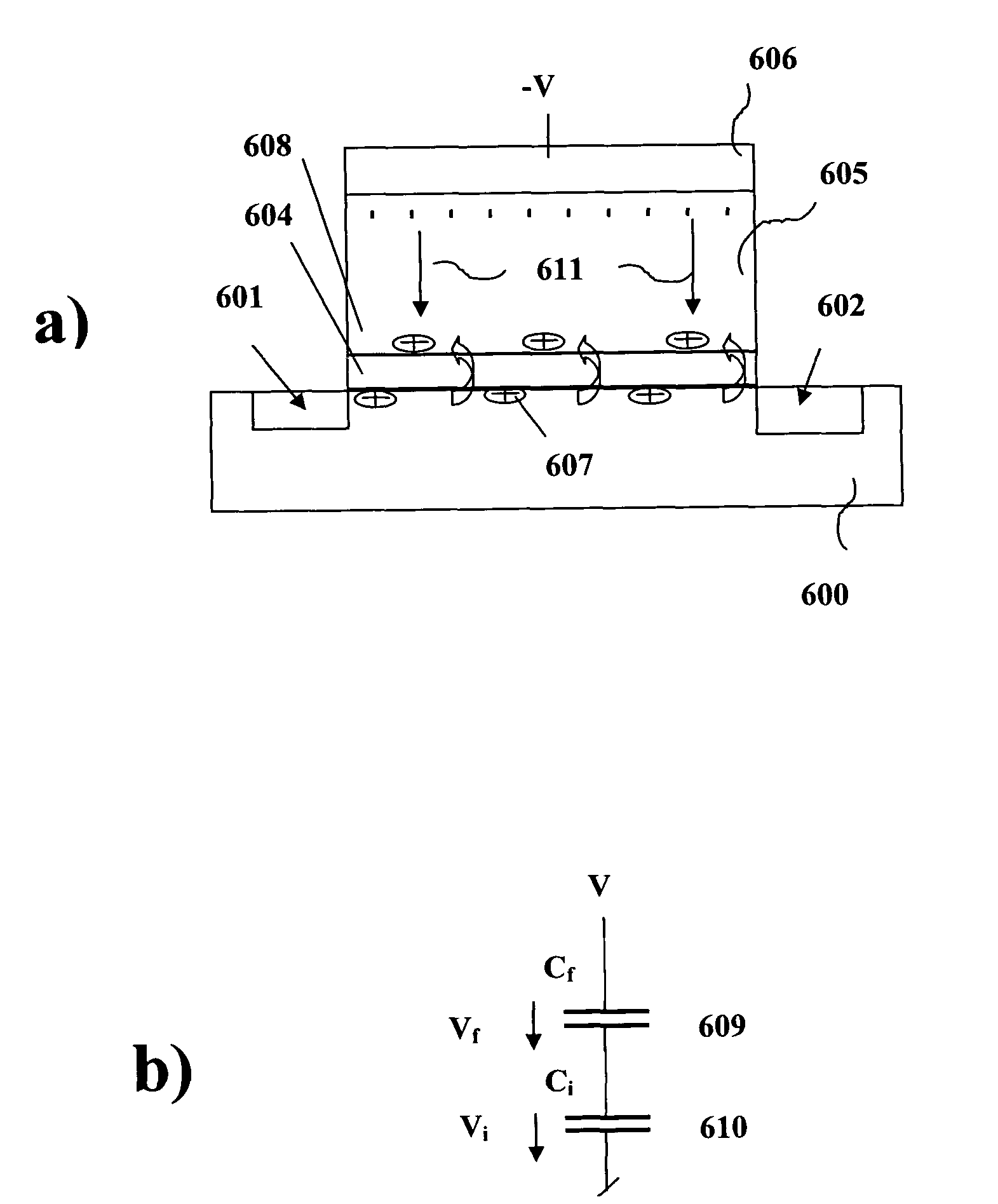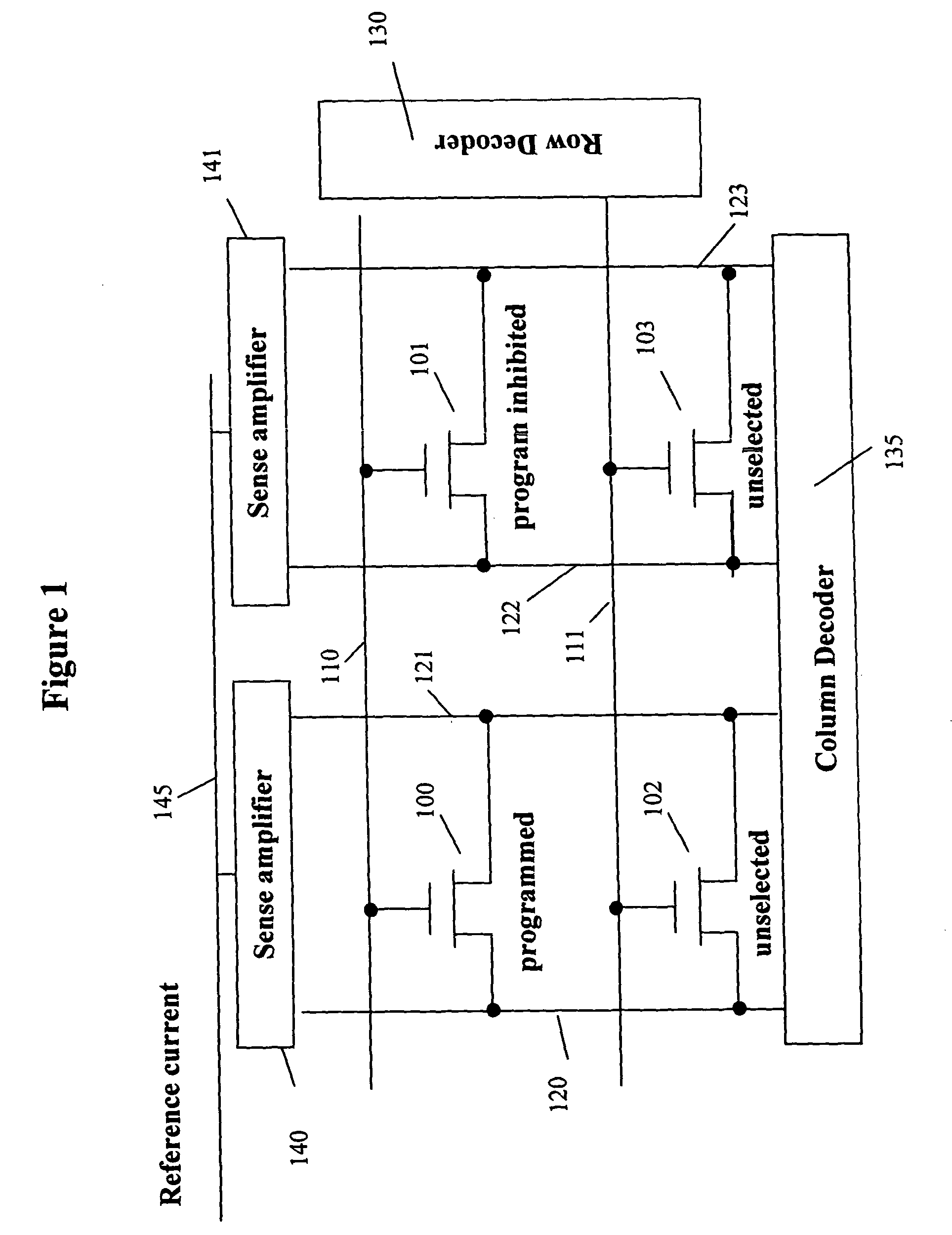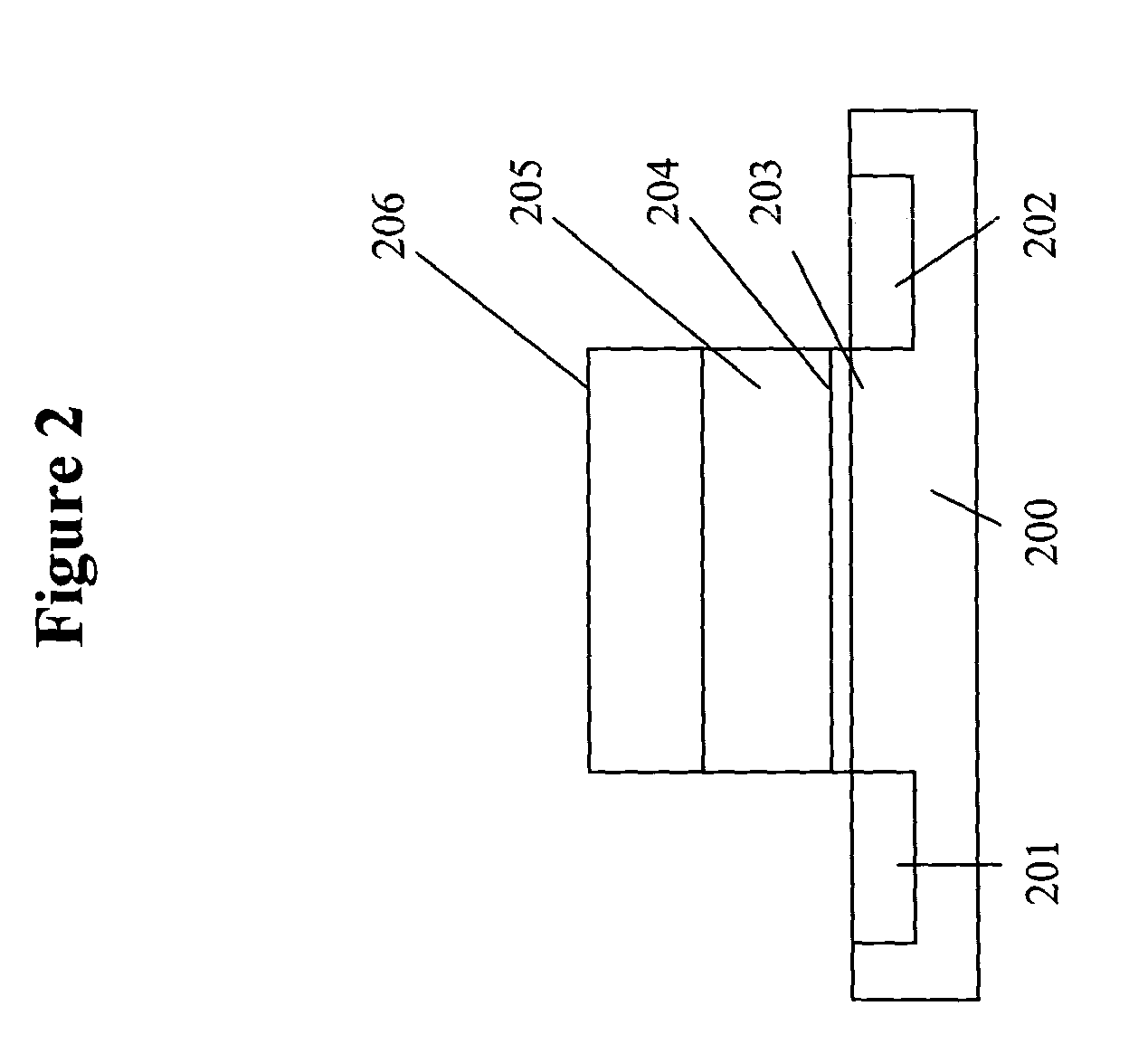Single transistor charge transfer random access memory
- Summary
- Abstract
- Description
- Claims
- Application Information
AI Technical Summary
Benefits of technology
Problems solved by technology
Method used
Image
Examples
Embodiment Construction
[0025]FIG. 1 is a schematic representation of a 2×2 array of single transistor memory cells arranged in rows and columns according to one embodiment of the present invention. The gate electrodes of the transistors in a common row are connected to and share a common word line. For example, devices 100 and 101 share word line 110, and devices 102 and 103 share word line 111. The sources and drains of the transistors in a common column share a common bit line pair. For example, the sources of transistors 100 and 102 share bit line 120, while drains share a common (complement) bit line 121. The sources of transistors 101 and 103 share bit line 122, while drains share a common (complement) bit line 123. In another embodiment of the invention bit line 121 and complement bit line 122 are combined and form a common bit line. A given word line is selected by a row decoder 130. One or more bit line pairs are selected by column decoder 135. A sense amplifier is connected to each bit line pair ...
PUM
 Login to View More
Login to View More Abstract
Description
Claims
Application Information
 Login to View More
Login to View More - R&D
- Intellectual Property
- Life Sciences
- Materials
- Tech Scout
- Unparalleled Data Quality
- Higher Quality Content
- 60% Fewer Hallucinations
Browse by: Latest US Patents, China's latest patents, Technical Efficacy Thesaurus, Application Domain, Technology Topic, Popular Technical Reports.
© 2025 PatSnap. All rights reserved.Legal|Privacy policy|Modern Slavery Act Transparency Statement|Sitemap|About US| Contact US: help@patsnap.com



